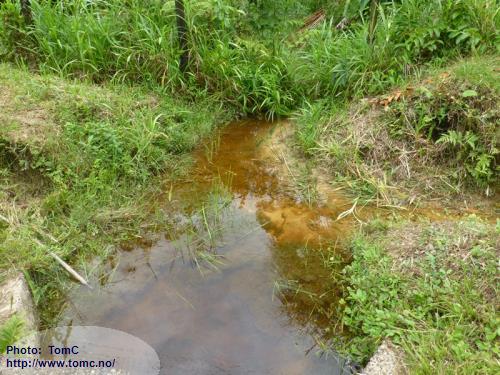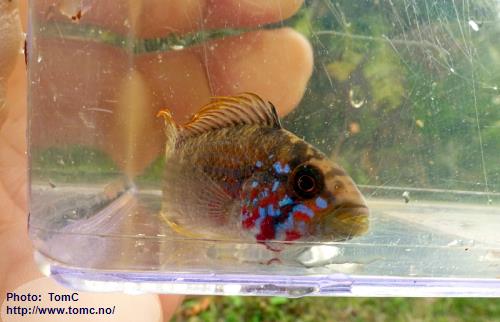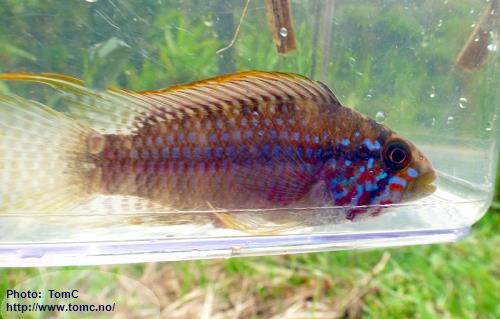Taxonomy
Uwe Römer, Clara Isis Römer, Guillain Estivals1, Antonia Vela Díaz, Fabrice Duponchelle, Carmen Rosa García Dávila1, Ingo Hahn & Jean François Renno. 2017
Description of a new maternal larvophilic mouth-brooding cichlid species, Apistogramma megastoma sp.n. (Teleostei:
Perciformes: Geophaginae), from Loreto, Peru
A. trifasciata-lineage
A. trifasciata-sublineage
A. atahualpa-group
A. barlowi-complex
Synonyms
Apistogramma sp. "Kelleri" (Rojo)
Apistogramma sp. "Leticia";
Apistogramma sp. "Jutai";
Apistogramma cf. sp. "Kelleri" (Jutai);
Apistogramma sp. "Diamond-face"
Distribution and habitat
Small jungle streams in the vicinity of the Colombian town Leticia.



I collected it in 2014:
See the little reportMy Experience
Easy to keep.
Eats everything I offer.
Not much aggression.
Seems to be more shy when kept in smaller tanks, than when kept in larger ones.
Breeding
This is an exclusively maternal mouth-brooding species.
I got 2 pairs of this species in late May 2010.
Two weeks after arrival, one of the pairs started breeding.......
The female used her mouth to move the larvae into a small pit in the sand, where they stayed until free-swimming! No signs at all of any mouthbrooding!
The week after, I noticed that the female of my other pair was chasing the male away in a rather intense manner. And she did that while mouthbrooding!
The differences between the two pairs:
The pair with the non-mouthbrooding female:
Tank: 85 liters (70x35x35 cm)
Other fish in the tank: 20 small youngsters of Nannostomus marginatus and one pair of Copella vilmae
Plants: Some floating plants, a couple of small Echinodorus,and some Cabomba aquatica.
Water: pH: 4,6 Conductivity: 102 microSiemens/cm Temperature: 26,7 degrees C (80,0 F)
Number of fry: 63 (!)
The pair with the mouthbrooding female:
Tank: 160 liters (100x40x40 cm)
Other fish in the tank: none
Plants: Some floating plants, a couple of large Echinodorus
Water: pH: 5,6 Conductivity: 90 microSiemens/cm Temperature: 25,7 degrees C (78.3 F)
Number of fry: 31
Both tanks have fine sand, wood, and peat filtered black-water.
The water movement is approximately the same.
The length of the day is 30 minutes shorter in the tank where mouthbrooding occurred.
The food was the same (Black mosquito-larvae and fresh BBS).
One would think that mouthbrooding would be more common in tanks with other fish, but here I could observe the opposite.
I never noticed any mouth-brooding from any of the males.
Around 2 month later, both pairs spawned again (with the first bunch of fry still in the tank). They behaved exactly the same way as the first time......